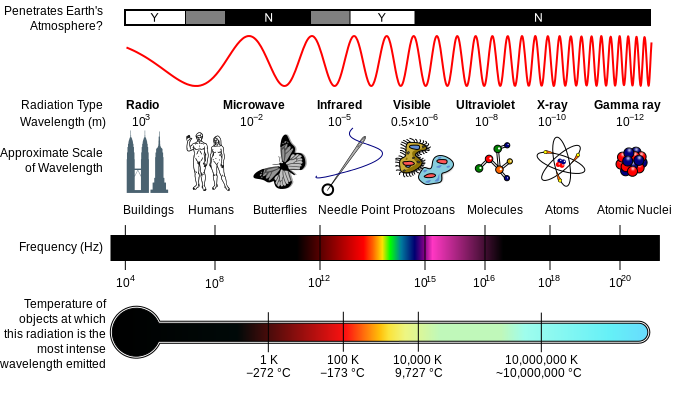How UV Germicidal Lights Clean the Air | Indoor Air Purification
Enjoy reading the latest DIY articles and saving money?
Receive our latest helpful hints, tricks and savings, directly to your inbox.
Posted June 1, 2017
Spring is here and with it comes heightened allergy symptoms, mold, mildew, and generally, more indoor air quality concerns. There are billions of microorganisms (from microbial, animal, and plant origins) floating around our homes everyday, .
These bioaerosols (airborne particulates composed or derived from living organisms) can cause significant health effects when breathed in. Bioaerosols are known to transmit infectious diseases and aggravate allergies and other respiratory problems.
In addition to causing chronic allergies, bioaerosols (pet dander, bacteria, insect fragments, fungi, dust mites, algae, and other microorganisms) also leave your home smelling funky. Store-bought air fresheners may offer temporary relief, but they often add to your indoor air quality problem rather than mitigate it.
There is a better way to clean the air and get rid of those harmful airborne particulates.
What Are UV Germicidal Lights?
Ultraviolet (UV) light is produced by the sun and present in our natural environments. It’s one of the reasons why indoor air often has pollutant levels “2-5 times, and occasionally, more than 100 times higher than outdoor levels” (U.S. EPA).
Ultraviolet light is on the electromagnetic spectrum with a wavelength just shorter than that of visible light, but longer than X-rays.
Source: wikipedia.org
There are both positive and negative effects of ultraviolet light. On the one hand, UV light contributes to sunburn, freckles, and skin cancer. But on the other, it forms the vitamin D we need to absorb calcium and form strong bones.
The other incredible effect of short-wavelength UV light is its disinfecting ability. UV germicidal irradiation is harmful to microorganisms and eventually kills them. The electromagnetic waves disrupt the cell’s DNA, rendering them unable to function.
UV lights are used in hospitals and medical facilities to inhibit bacteria, virus, mold, and pathogen growth. UV light is used to sanitize and disinfect many things, including food and water.
UV Light Air Irradiation and Indoor Air Quality
UV light systems that are built into your ductwork can kill, not just trap, airborne particulates. Any germs that make it past the air filter are then exposed to UV light in your ductwork, killing even the most stubborn of organisms.
In addition to improving your short and long-term health and comfort, the UV light will also be installed near your indoor HVAC unit, shining light and killing bacteria, mold, and fungi on your indoor coils, condensate drain pan, and other core components of your system. This will help keep you A/C or heat pump running cleanly and efficiently all year, reducing your need for maintenance, repairs, and replacements.
Additional Tips for Allergy Sufferers
- Microorganisms love humid, dark and warm environments. Keep humidity lower than 55%. If you don’t have a dehumidifier, get one.
- Since your HVAC system has an air filter built in, running your air conditioner can help you feel better. It also helps naturally dehumidify the air.
- Frequently clean the linens and fabric in your home with hot water.
- Keep pets outside, but we understand that sometimes that’s just not possible. If you can, however, keep them out of your bedroom and sleeping spaces. These areas of the home have the most fabric and where you spend the majority of your time.
- Consider covers for your mattresses and pillow.
- Keep bugs and insects out of the home by sealing all entry points. Sealing leaks in your home will also help lower your energy bills. Go around your home with an incense stick or single-ply toilet paper and hold it up to areas where you suspect a draft. If there is indeed air flow, use weatherproof caulk or expandable foam spray to seal the cracks and gaps in and around your home.
- Fabric drapes, carpet, and rugs may not be the best choice. Consider different flooring options like hardwood, tile, and vinyl.
Indoor Air Quality Resources:
- Air Filtration Options
- How to Inspect, Clean & Seal Air Ducts
- 5 Air-Purifying Plants for Your Home
- How to Have Good Air Quality in Your Home During Winter
- Air Conditioning Maintenance Checklist for Spring and Summer
- Environmental Protection Agency Resources
We want to improve your indoor air quality! Don’t hesitate to contact us for more information on air cleaners, air purifiers, and air filtration.
Learn more about HVAC systems and indoor air quality by following this link to the Environmental Protection Agency.
 Daily Promotion
Daily Promotion
0% Interest for 12 Months on Select New Tankless Water Heater
Purchase Select New Tankless Water Heater & Receive 0% Interest for 12 Months. Click below to see financing terms.
Get Promotion
